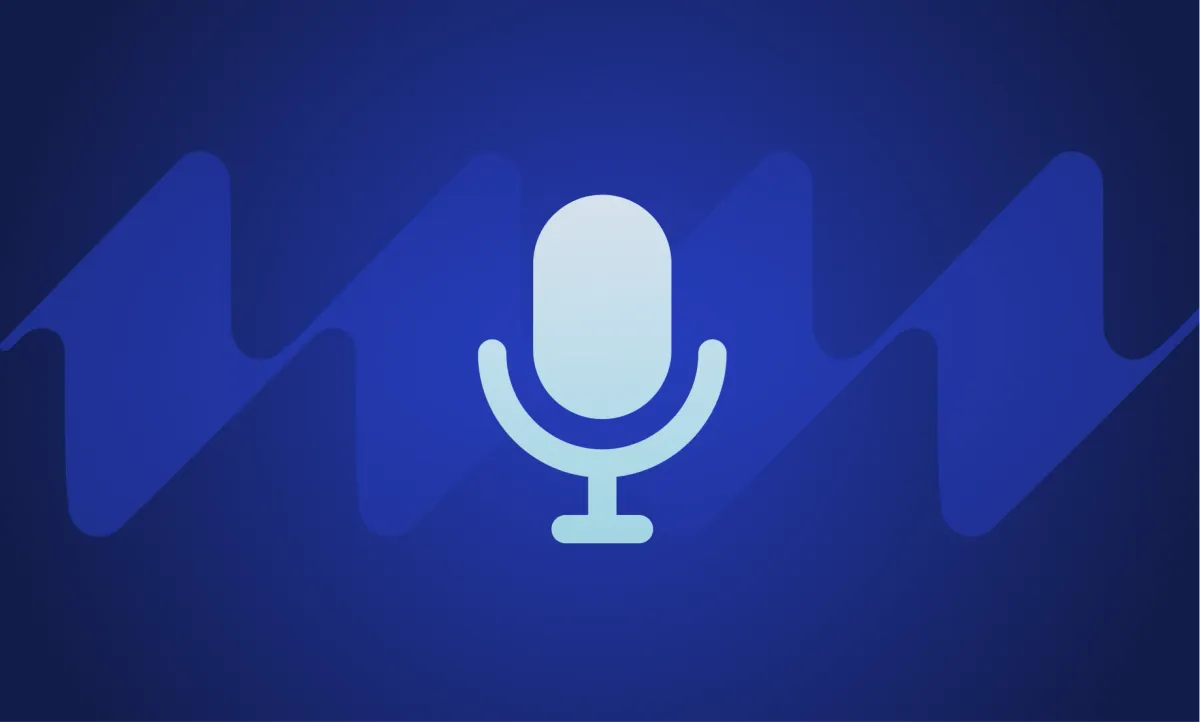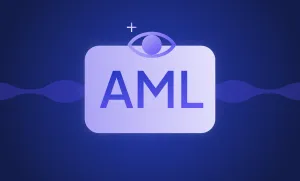Finding the best microphone for podcasting is like choosing the best running shoes: it will either carry you to success or hold you back at every step of your journey.
Just like picking running shoes, you want a microphone that fits your style and needs. Are you a dynamic talker who loves to roam around the studio, or do you prefer to sit and chat quietly? Do you need something that can handle the buzz of the city, or the silence of a soundproof room?
In this blog post, we’ll help you find the best podcast microphone for your show by guiding you through different microphone types, popular options, pros and cons, and pretty much everything else you need to know about podcast mics.
Feel free to jump to the section that interests you the most:
Table of Contents:
1) How to Choose a Microphone
2) Microphone Types and Their Uses
3) XLR Microphone vs DSLR Microphone
4) The Best Podcast Microphone Options for 2025
5) Ditch the Mic with Podcastle’s Magic Dust
How to Choose a Microphone
With so many options available on the market, it's essential to consider several factors when choosing the best podcast microphone for your needs.
Here are some key considerations to keep in mind.
1) Purpose and Environment
Before diving into microphone options, think about the primary purpose of your podcast and the recording environment. Are you conducting interviews in a noisy cafe, recording solo in a quiet studio, or capturing live events on the go? The type of content you produce and the surroundings in which you record will influence the microphone to suit your needs best.
2) Microphone Type
There are several types of microphones to choose from, including dynamic, condenser, and shotgun microphones. Each type has its own strengths and weaknesses, so it's essential to understand how they differ and which type is best suited for your recording situation. For example, dynamic microphones are rugged and versatile, making them ideal for outdoor recording, while condenser microphones offer superior audio quality and sensitivity, perfect for studio environments. We will discuss the different microphone types in more detail in the next section.
3) Polar Pattern
Consider the microphone's polar pattern, which determines the directionality of its pickup pattern. Common polar patterns include cardioid, omnidirectional, and bidirectional. For podcasting, a cardioid microphone is often preferred as it captures sound primarily from the front while minimizing background noise from the sides and rear. However, your specific recording setup and requirements may dictate a different polar pattern.
4) Budget
Your budget will inevitably play a significant role in your best podcast microphone selection process. While there are high-end options available with advanced features and superior audio quality, there are also budget-friendly options that offer decent performance for beginners or podcasters on a tight budget. Consider how much you're willing to invest in your podcasting equipment and prioritize features accordingly.
5) Compatibility
Ensure that the microphone you choose is compatible with your existing recording equipment. If you're using a digital audio interface or mixer, make sure the microphone can connect to it seamlessly. Additionally, if you're recording directly into a computer or smartphone, consider whether the microphone offers USB connectivity for plug-and-play convenience.
6) Reviews and Recommendations
Finally, take the time to research and read reviews from other podcasters to get a sense of which microphones are highly recommended. Pay attention to factors such as audio quality, durability, and ease of use. Don't hesitate to seek recommendations from fellow podcasters or audio professionals who can offer valuable insights based on their experiences.
Microphone Types and Their Uses
Now, let’s have a quick overview of the most famous microphone types out there. Understanding the different types of microphones available and their uses can help you make an informed decision that meets your podcasting goals and recording environment.
So here are the most common types of microphones you need to know about.
1) Dynamic Microphone
Dynamic microphones are known for their durability and versatility, making them popular choices for podcasters, especially those recording in less-than-ideal acoustic environments. These microphones are rugged and can handle high sound pressure levels, making them suitable for recording loud sources like musical instruments or outdoor interviews.
They are also less sensitive to background noise, making them ideal for recording in noisy environments or not soundproof rooms. The dynamic microphone typically has a cardioid polar pattern, which means it picks up sound primarily from the front while minimizing noise from the sides and rear.
In other words, if you’re looking for a microphone to minimize the surrounding noise for your interviews in the cafes or on-the-go recordings, dynamic microphones are the best podcast microphone for you!
2) Condenser Microphone
A condenser microphone is known for its sensitivity and clarity, making it a top choice for studio recording and capturing nuanced vocal performances. Unlike dynamic microphones, condenser mics are more sensitive to sound and require external power, either from batteries or phantom power of an audio interface or mixer.
The condenser microphone is perfect for recording detailed audio with a wide frequency response, so you can easily capture the nuances of your speech or musical performances. They come in various polar patterns and types, so you can choose between cardioid microphones, omnidirectional microphones, and bidirectional microphones. Pick the one that matches your recording setup the most, and get ready to record crystal-clear sound!
3) USB Microphone
The USB microphone has become an increasingly popular podcasting mic due to its convenience and ease of use. These microphones feature built-in analog-to-digital converters, allowing you to connect directly to your computer via USB without the need for additional audio interfaces or mixers.
USB microphones come in both dynamic and condenser varieties, offering a plug-and-play solution for podcasters looking to start recording with minimal setup. While they may not offer the same level of audio quality and flexibility as traditional studio microphones, USB microphones are the best podcast microphone choice for beginners or podcasters on a budget.
4) Shotgun Microphone
A shotgun microphone is highly directional, designed to capture sound from a distance while rejecting off-axis noise. It features a narrow pickup pattern, allowing it to focus on the desired sound source while minimizing background noise.
The shotgun microphone is commonly used in film and television production to capture dialogue and ambient sounds but can also be useful for podcasters recording in noisy environments or conducting interviews on location.
XLR Microphone vs DSLR Microphone
Another important thing to know when choosing the best podcast microphone for your show is the difference between XLS and DSLR microphones. Each has its own advantages and considerations, so let's break down the differences between them.
XLR Microphone
The XLR microphone is the standard choice for professional audio recording setups. Instead of USB, these microphones use XLR cables, which have three pins and are known for their balanced audio transmission, minimizing interference and noise. XLR microphones are commonly used in studios, live performances, and professional video productions.
Advantages
- – Audio Quality: The XLR microphone generally offers higher audio quality compared to the DSLR microphone. It is capable of capturing clearer and more detailed sound, making it ideal for professional-grade recordings.
- – Versatility: XLR microphones come in a variety of types, including dynamic, condenser, and shotgun mics, offering versatility for different recording scenarios.
- – Compatibility: The XLR microphone requires an audio interface or mixer to connect to your recording device, such as a computer or digital recorder. While this adds an extra step to your setup, it also allows for more control over audio levels and processing.
DSLR Microphones
The DSLR microphone, also known as a camera-mounted or on-camera microphone, is designed to attach directly to DSLR cameras or other video recording devices. These microphones are popular among videographers and content creators who need a compact and portable audio solution.
Advantages
- – Portability: The DSLR microphone is compact and lightweight, making it easy to carry and use for on-the-go recording. They are ideal for vlogging, documentary filmmaking, and other situations where mobility is essential.
- – Ease of Use: DSLR microphones typically connect directly to the camera's audio input, eliminating the need for additional equipment like audio interfaces or mixers. This simplifies the recording setup and allows for quick and hassle-free recording.
- – Cost-Effectiveness: The DSLR microphone is often more affordable than the XLR microphone, making it the best podcast microphone option for beginner or budget-friendly videographers and content creators.
Choosing between XLR and DSLR microphones depends on your specific needs, budget, and recording environment. If you prioritize audio quality and versatility and are willing to invest in additional equipment, XLR microphones are the way to go. However, if portability and simplicity are more important to you, DSLR microphones offer a convenient solution for on-the-go recording.
Here is a quick comparison chart that may come in handy:
The 6 Best Podcast Microphone Options for 2025
1) Samson Q2U
The Samson Q2U is the best podcast microphone for those on a budget. With an average cost of $70 and dual connectivity via XLR and USB, it offers versatility and convenience for podcasters of all levels. Its dynamic design ensures clear and professional-quality audio recordings, making it a significant upgrade from cheaper headset mics or internal microphones.
While availability may vary in certain regions, its dual output capabilities allow for seamless integration with recording software like Garageband or Audacity via USB, as well as facilitating online calls with remote guests.
Overall, the Samson Q2U offers exceptional performance and affordability, making it one of the best podcast microphone choices for 2025.
2) Rode Smartlav+
The Rode Smartlav+ stands out as a top contender for podcasters looking for portability and convenience without sacrificing quality. With an average cost of $53 and a 3.5mm connection, it's specifically designed for smartphone use, making it ideal for on-the-go recording.
While its condenser function may not match the audio quality of higher-end XLR or USB mics, its compact size and versatility more than compensate. The Smartlav+ is the best podcast microphone for capturing interviews or spontaneous encounters with ease. Its compatibility with modern smartphones, coupled with the option to bundle with the SC6 adapter for dual-mic recording, transforms it into a versatile in-person interview kit that fits in your pocket.
3) Rode Podcaster
A bit on the higher end, another good Rode microphone is the Rode Podcaster, which is the best podcast microphone choice for podcasters seeking high-quality audio in a convenient USB form.
With an average cost of $170 and a dynamic function, it offers professional-grade performance without the need for additional equipment like audio interfaces or mixers. While it may require a boom arm for optimal positioning, its USB connectivity makes it a hassle-free solution for podcasting setups.
Whether you're setting up a home studio or upgrading your podcasting gear, the Rode Podcaster is a solid choice for achieving professional-level sound quality.
4) Sennheiser Profile
The next one on our list is the Sennheiser Profile. With an average cost of $130 and a USB connection, it offers convenience and quality in a compact package. Praised for its intuitive controls and small size, the Profile offers excellent sound performance without requiring extensive desk space.
However, despite its merits, some users have reported setup issues, particularly compatibility with software like OBS. While these issues may have only occurred with specific computer setups, it's essential to consider the potential for troubleshooting when opting for plug-and-play microphones like the Sennheiser Profile.
5) Samson Q9U
The Samson Q9U is a promising option for podcasters seeking versatility and high-quality audio performance. With an average cost of $120 and dual connectivity via XLR and USB, it offers convenience and flexibility for various recording setups.
Praised for its dynamic function, the Q9U delivers clear and professional-grade sound, whether plugged directly into a computer or used with an audio interface or digital recorder. While a boom arm may be necessary for better positioning, its affordable price point and superior sound quality make it a compelling choice for podcasters looking to upgrade their setup.
6) Shure SM7b
The Shure SM7b is a renowned microphone in the podcasting world, known for its exceptional audio quality. With an average cost of $380 and a dynamic function, it's considered one of the best podcast microphones available.
Loved by audio enthusiasts, the SM7b lives up to its reputation, delivering clear and professional-grade sound. However, it's worth noting that the SM7b requires a strong preamp to reach its full potential. This means you may need extra gear and components for your setup, adding to the overall cost.
Ditch the Mic with Podcastle’s Magic Dust
You know what? We suggest you forget about what you just read and ditch the podcast microphone completely!
Okay, we’re entirely serious about it. Podcast microphones are definitely important, but before you get one, we do suggest you try our recording tool if you’re looking for a quick and easy way to enhance your audio quality without breaking the bank.
Although microphones have been a podcasting staple, Podcastle challenges this norm with AI-driven features. Our recording studio lets you capture studio-quality audio directly from your laptop or iOS device, skipping the need for pricey equipment. At the same time, our one-click background noise remover feature called Magic Dust, automatic audio leveling, and other AI enhancements let you edit your recordings to studio perfection without extra costs.
Ready to simplify your podcasting like never before? Say goodbye to bulky microphones and hello to hassle-free recording with Podcastle!








